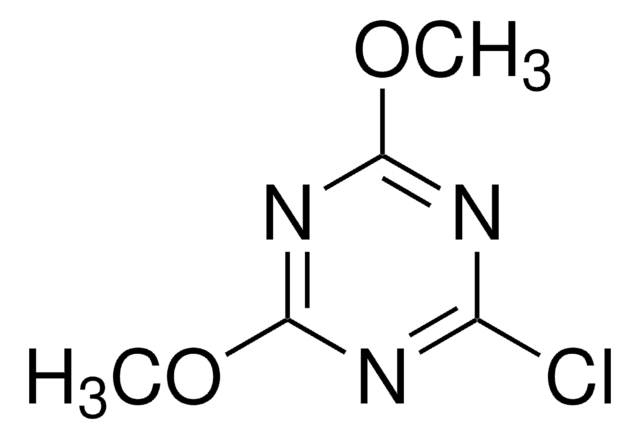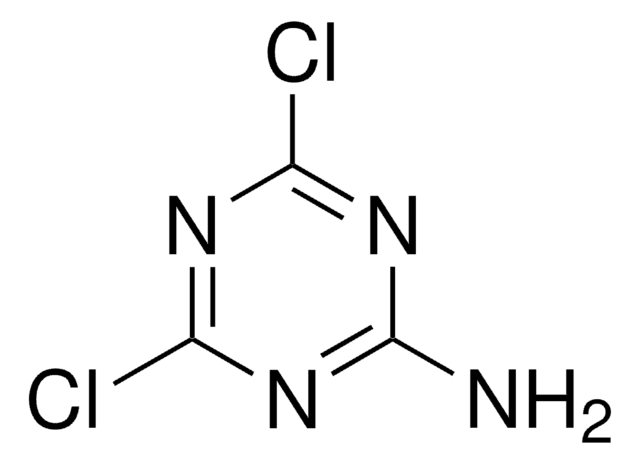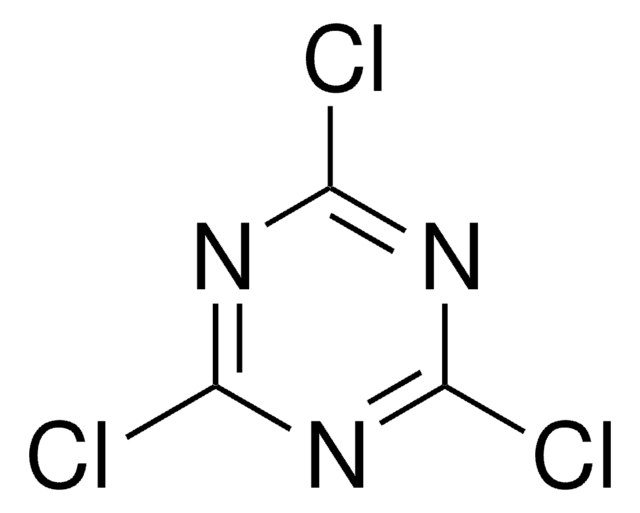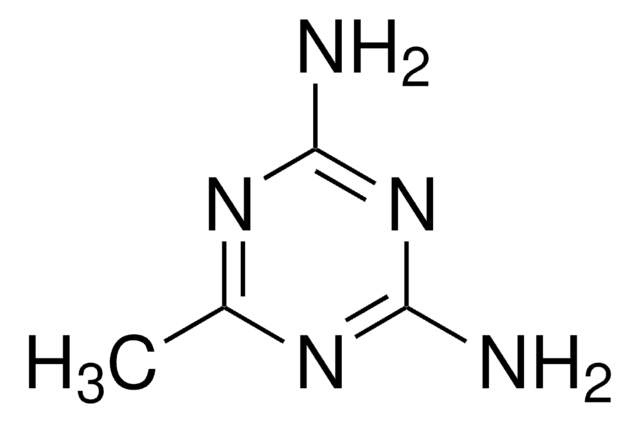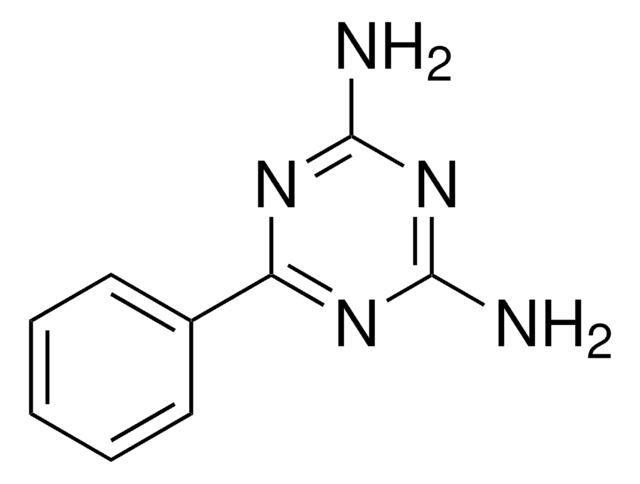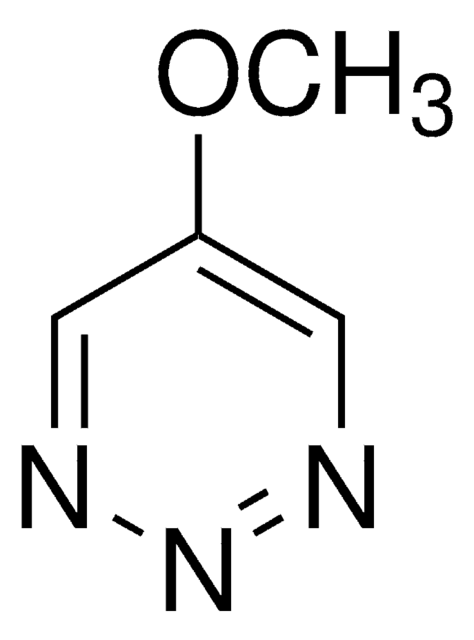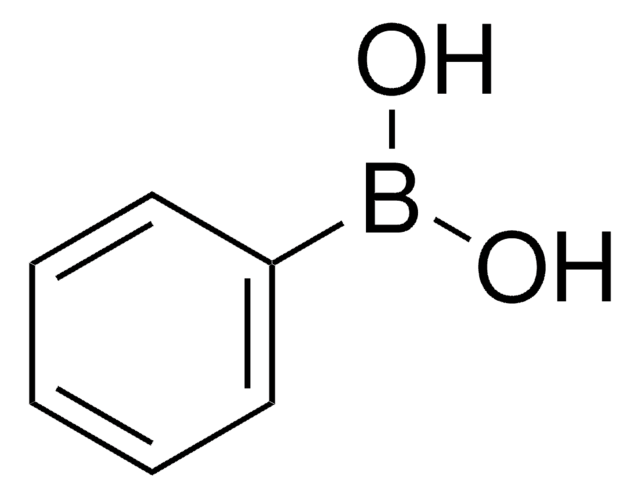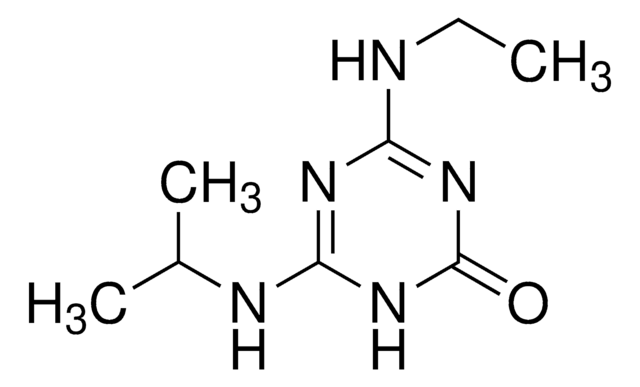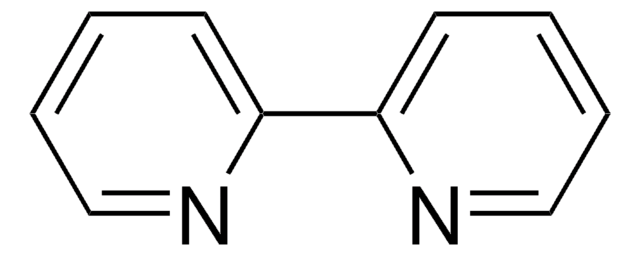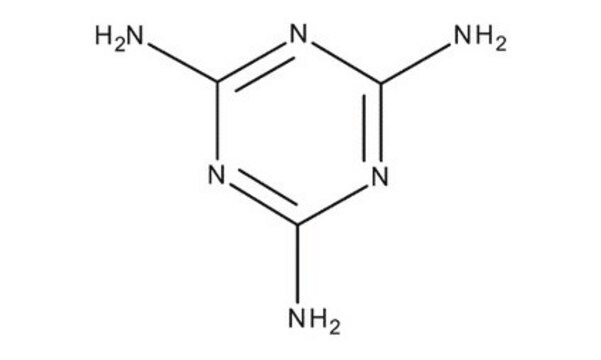C33301
2-Chloro-4,6-diamino-1,3,5-triazine
95%
Sinónimos:
6-Chloro-2,4-diamino-1,3,5-triazine, Desethyl-desisopropyl-atrazine
Iniciar sesiónpara Ver la Fijación de precios por contrato y de la organización
About This Item
Fórmula empírica (notación de Hill):
C3H4ClN5
Número de CAS:
Peso molecular:
145.55
Número CE:
Número MDL:
Código UNSPSC:
12352100
ID de la sustancia en PubChem:
NACRES:
NA.22
Productos recomendados
Nivel de calidad
Ensayo
95%
Formulario
powder
mp
>320 °C (lit.)
cadena SMILES
Nc1nc(N)nc(Cl)n1
InChI
1S/C3H4ClN5/c4-1-7-2(5)9-3(6)8-1/h(H4,5,6,7,8,9)
Clave InChI
FVFVNNKYKYZTJU-UHFFFAOYSA-N
Información sobre el gen
mouse ... Esr1(13982)
Código de clase de almacenamiento
11 - Combustible Solids
Clase de riesgo para el agua (WGK)
WGK 3
Punto de inflamabilidad (°F)
Not applicable
Punto de inflamabilidad (°C)
Not applicable
Equipo de protección personal
Eyeshields, Gloves, type N95 (US)
Elija entre una de las versiones más recientes:
¿Ya tiene este producto?
Encuentre la documentación para los productos que ha comprado recientemente en la Biblioteca de documentos.
Los clientes también vieron
Joseane M Pozzebon et al.
Journal of chromatography. A, 987(1-2), 375-380 (2003-03-05)
A method was developed to determine simazine, atrazine and their metabolite, 2-chloro-4,6-diamino-1,3,5-triazine, in urine. The presence of these herbicides in urine may reflect possible exposure to pesticides. Sample preparation involved protein precipitation and solid-phase extraction. The samples were analyzed by
Greg P Dooley et al.
Chemical research in toxicology, 19(5), 692-700 (2006-05-16)
Atrazine (2-chloro-4-[ethylamino]-6-[isopropylamino]-1,3,5-triazine) is one of the most commonly used herbicides in North America and is frequently detected in ground and surface waters. This research investigated possible covalent modifications of hemoglobin following in vivo exposures to atrazine in Sprague Dawley (SD)
Jennifer L Seffernick et al.
Applied and environmental microbiology, 68(9), 4672-4675 (2002-08-30)
2-Chloro-4,6-diamino-s-triazine (CAAT) is a metabolite of atrazine biodegradation in soils. Atrazine chlorohydrolase (AtzA) catalyzes the dechlorination of atrazine but is unreactive with CAAT. In this study, melamine deaminase (TriA), which is 98% identical to AtzA, catalyzed deamination of CAAT to
C Ernst et al.
Applied microbiology and biotechnology, 42(5), 763-768 (1995-01-01)
A bacterium utilizing 2-chloro-4,6-diamino-s-triazine (CAAT) as sole nitrogen source was isolated under a N2-free atmosphere and identified as Klebsiella pneumoniae. Concomitant to CAAT degradation the protein content increased and chloride was released into the medium. Under air and a N2-atmosphere
Susan C Laws et al.
Toxicological sciences : an official journal of the Society of Toxicology, 76(1), 190-200 (2003-09-13)
We showed previously that the chlorotriazine herbicide, atrazine (ATR), delays the onset of pubertal development in female rats. ATR and its biotransformation by-products are present in soil and groundwater. Since current maximum contaminant levels are set only for ATR, it
Nuestro equipo de científicos tiene experiencia en todas las áreas de investigación: Ciencias de la vida, Ciencia de los materiales, Síntesis química, Cromatografía, Analítica y muchas otras.
Póngase en contacto con el Servicio técnico